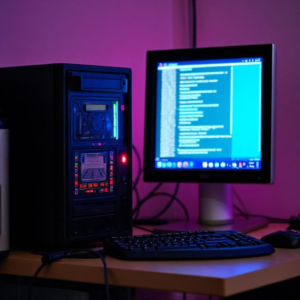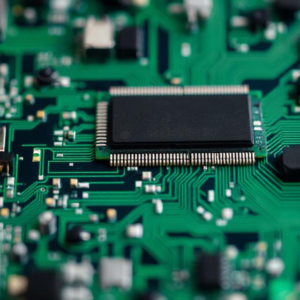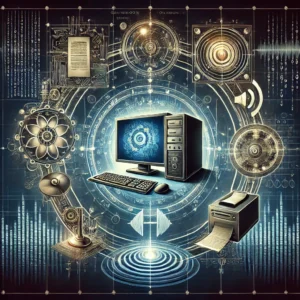1. What is a Computer?
- A computer is an electronic device capable of processing data and performing tasks according to instructions (programs).
- It includes hardware (physical components) and software (programs or operating systems that run the hardware).

2. Components of a Computer
- Hardware: Physical parts of a computer.
- Central Processing Unit (CPU): The brain of the computer where processing and execution occur.
- Memory (RAM): Temporary storage used to store data that is actively being used or processed.
- Storage: Long-term storage for data (e.g., Hard Drive, SSD).
- Input Devices: Devices used to input data into the computer (e.g., keyboard, mouse).
- Output Devices: Devices used to display or output data (e.g., monitor, printer).
- Motherboard: The main circuit board that holds all the components together and allows communication between them.
- Software: Programs and applications that tell the computer how to perform tasks.
- Operating System (OS): The system software that manages hardware resources and provides common services for computer programs (e.g., Windows, macOS, Linux).
- Application Software: Software that performs specific tasks for users (e.g., Microsoft Word, web browsers).
3. Input and Output
- Input: Data sent into the computer from external devices (e.g., keyboard, mouse).
- Output: Data processed by the computer and sent out to external devices (e.g., display, speakers).
4. Storage Devices
- Hard Drive (HDD): Traditional magnetic storage device.
- Solid State Drive (SSD): A faster, more reliable storage option than HDD.
- Optical Discs: (e.g., CDs, DVDs) Used for storing data that can be read by optical devices.
- Flash Drives and External Storage: Portable storage devices, often using solid-state memory.
5. Operating System (OS)
- A set of software that manages computer hardware and software resources and provides services for computer programs.
- Examples: Windows, macOS, Linux, Android, iOS.
- Functions: Memory management, file system management, process management, device management, etc.
6. Software Types
- System Software: Software that manages the hardware of the computer (e.g., operating systems, device drivers).
- Application Software: Programs that perform specific tasks for the user (e.g., word processors, web browsers, games).
7. Networking Concepts
- Internet: A global network that connects millions of private, public, academic, and government networks.
- Local Area Network (LAN): A network that connects computers within a limited area, like an office or home.
- Wi-Fi: A wireless networking technology that allows devices to communicate without physical cables.
- IP Address: A unique identifier for devices on a network.
- Router: A device that forwards data between computer networks.
8. File Management
- Files: Collections of data or information stored on a computer (e.g., text files, images).
- Folders/Directories: Containers for organizing files.
- File Extensions: Suffixes that indicate the file type (e.g., .txt for text files, .jpg for images).
- File System: A system for organizing and storing files (e.g., NTFS for Windows, HFS+ for macOS).
9. Computer Security
- Antivirus Software: Software designed to detect, prevent, and remove malware.
- Firewall: A security system that monitors and controls incoming and outgoing network traffic.
- Encryption: A process of converting data into a code to prevent unauthorized access.
- Password Protection: Security measure requiring users to enter a password to access accounts or files.
10. Basic Programming Concepts
- Programming Languages: Languages used to write software (e.g., Python, Java, C++).
- Algorithms: Step-by-step instructions to perform tasks or solve problems.
- Variables: Storage locations for data in programs.
- Loops: Programming structures that repeat a set of instructions.
- Functions: Reusable blocks of code designed to perform specific tasks.
11. Computer Peripherals
- Printers: Devices that output data to paper.
- Scanners: Devices that input data from paper (e.g., converting text or images to digital format).
- Speakers: Devices that output sound.
- Webcams: Devices for video input.
12. Cloud Computing
- Storing and accessing data and applications over the internet, rather than on local computers or hard drives.
- Examples: Google Drive, Dropbox, Microsoft OneDrive.
13. Multimedia
- Images: Graphics, photos, and pictures displayed on a computer.
- Audio: Sound files (e.g., MP3, WAV).
- Video: Moving visual media (e.g., MP4, AVI).
- Video Games: Interactive multimedia applications.
14. Computer Maintenance
- Software Updates: Installing updates to improve functionality and security.
- Disk Cleanup: Removing unnecessary files to free up space and improve performance.
- Defragmentation: Reorganizing fragmented data on a disk to improve speed (for HDDs, not required for SSDs).
15. Basic Troubleshooting
- Error Messages: Alerts from the computer indicating problems.
- Rebooting: Restarting the computer to resolve issues.
- System Restore: Returning the system to a previous working state.
These basic concepts provide a solid foundation for understanding how computers work and how to use them effectively. Let me know if you want more details on any specific area.











